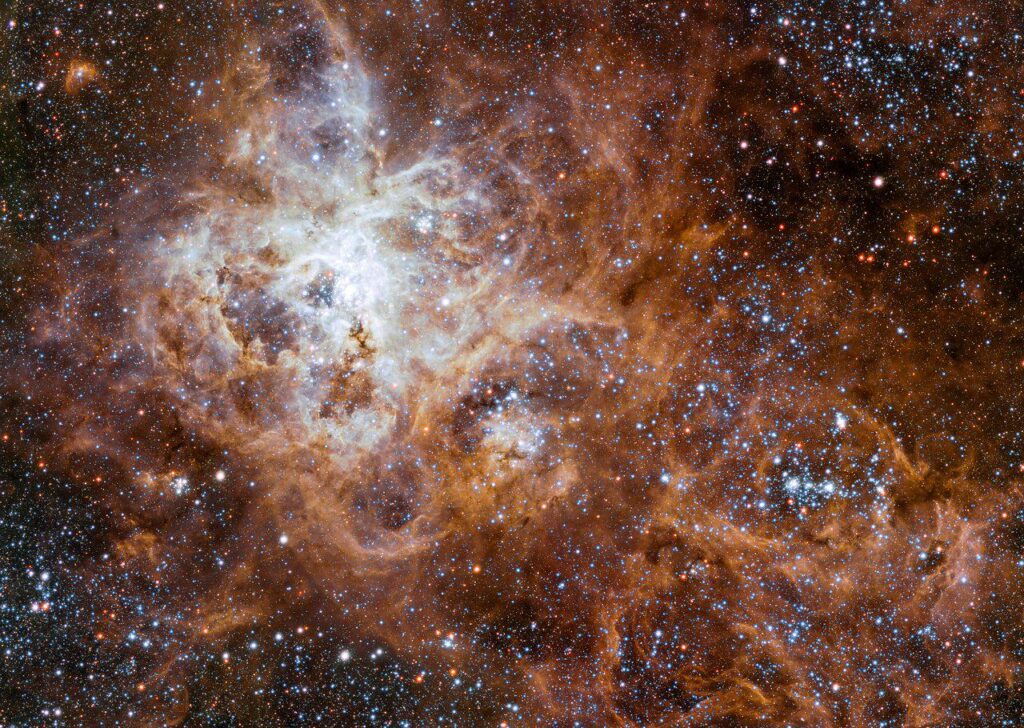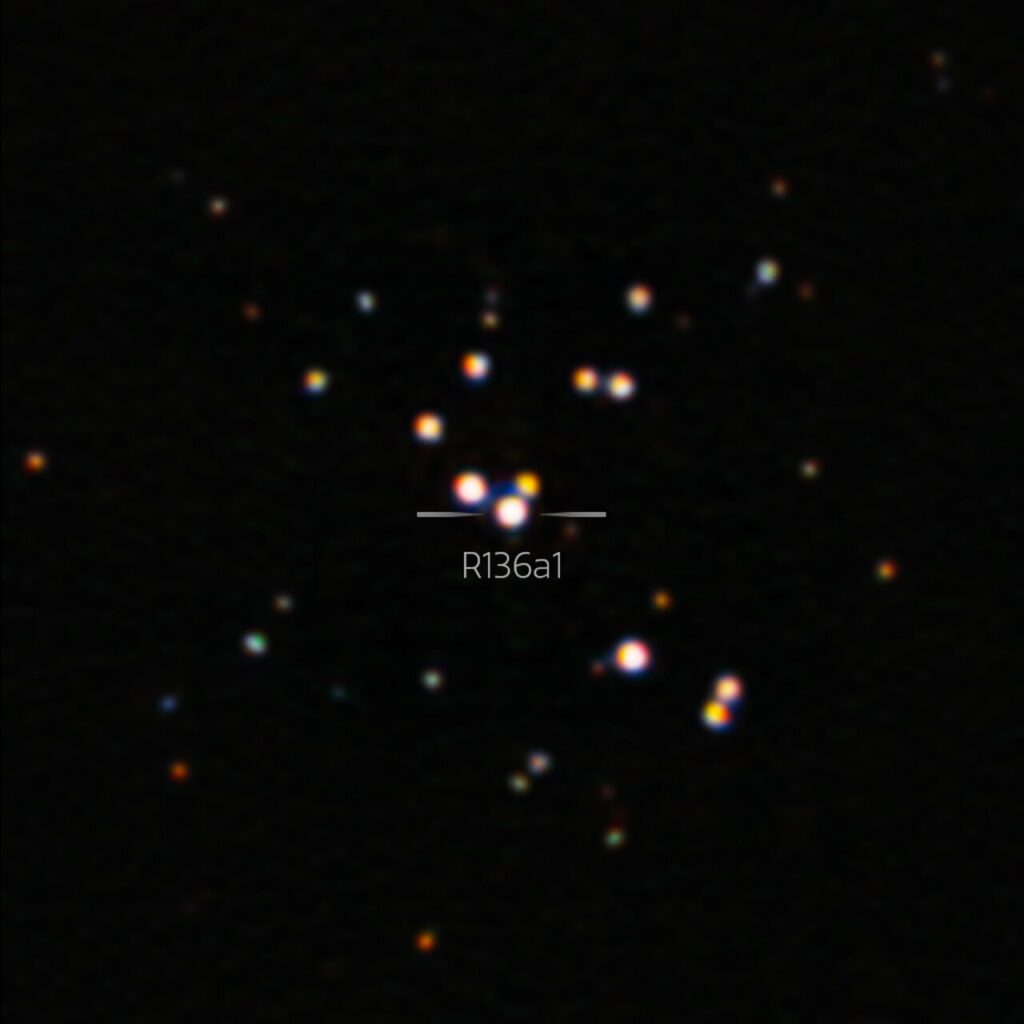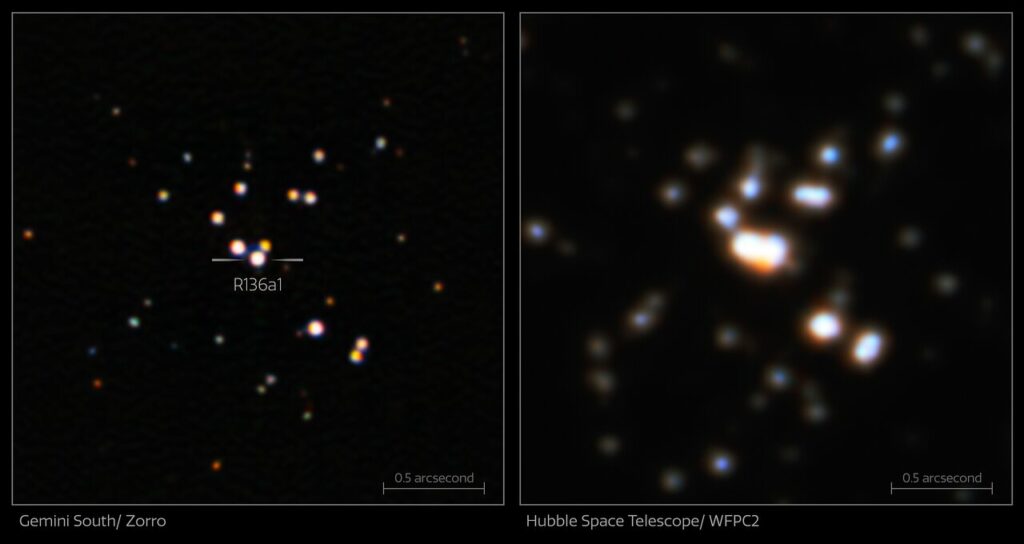The staff of the Gemini Observatory published the most detailed image of the blue supergiant R136a1. To date, it ranks first in the list of the most massive stars in the Universe.
Giant Star Maternity Home
The star R136a1 is located in the Tarantula Nebula. This is a region of active star formation located in the Large Magellanic Cloud, a moon galaxy of our Milky Way. The Tarantula nebula is a giant cloud of ionized hydrogen, which length exceeds a thousand light-years. It is home to some of the brightest and most massive luminaries known to science. In 1987, a supernova SN 1987A broke out on the outskirts of the Nebula. It became the first supernova observed in the Earth’s sky with the naked eye in the last 300-plus years.

R136a1 can rightfully be called the pearl of the Tarantula Nebula. It was opened in 2010. The first measurements have already shown that the star has a record luminosity that is millions of times higher than the solar one. As for the mass, astronomers estimated it at 250 – 320 masses of our Sun.
At the same time, the study of the giant luminary was fraught with a number of difficulties. It is located in the center of a star cluster. The radiation of its neighbors is superimposed on the light emitted by R136a1, significantly complicating the assessment of its brilliance. The situation is further complicated by the surrounding gas and dust clouds. In recent years, many telescopes (including the famous Hubble) have made a number of observations of R136a1, but none of them get sufficiently clear images to consider all its neighbors.
Photo of the most massive star in the Universe
In an attempt to clarify the characteristics of R136a1, astronomers decided to use the Zorro receiver mounted on the 8.1-meter Gemini South telescope in Chile. During a series of observations, it managed to obtain the clearest images of R136a1 and the surrounding stars in history.

Gemini South images allowed astronomers to more accurately determine the brightness of the blue supergiant, which in turn made it possible to reassess its mass. It turned out to be smaller than previously thought. According to updated estimates, the mass of R136a1 lies in the range from 170 to 230 solar. But even with this in mind, it still remains the most massive star known to us in the Universe.

According to the researchers, the results of the observation of R136a1 suggest that the upper limit of stellar masses may be less than previously thought. This result is also important for determining the origin of some heavy elements in the Universe that are believed to be formed during the collapse of luminaries which mass is 150 times greater than the solar one (the so-called pair-unstable supernovae). If R136a1 is less massive than expected, then such events may be much more rare.
Follow us on Twitter to get the most interesting space news in time
https://twitter.com/ust_magazine
